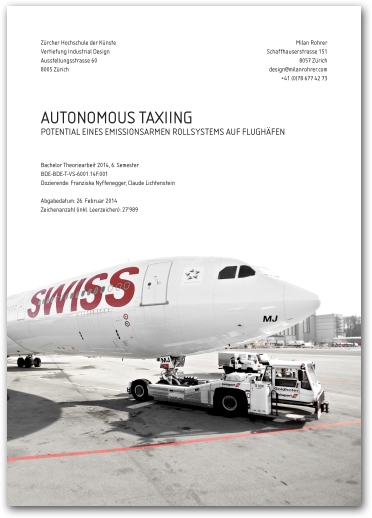Pushback
In order to be competitive as an airline, efficiency must be steadily increased and operating costs kept low. On the one hand, this is done through the use of modern and ever-improving technologies, on the other hand, through the optimization of processes. One such process to be optimized is the taxiing of the aircraft at the airport. Aircraft move on the runway to get from the stand to the runway by feeding their engines. If a more effective system were to be used on this route, not only immense costs, but also environmentally harmful emissions could be saved. For this to happen, a vehicle is required that can bring the aircraft from their stand to the runway. Experiments have already been carried out in the 1980s, but there has been no implementation. The reason for this is likely to be the high investment costs of the necessary infrastructural and material measures. On the one hand, such a system requires more towing vehicles, as these require more time for operations, on the other hand, additional taxiways are required for operation, so that the aircraft could return to their stand in the event of a technical problem during engine take-off. If such a system is operated autonomously, this benefits the airport, as it can save on staff costs. In addition, the process would be simplified, since reduced human influence potential sources of error are reduced. The use of design helps to develop such a system and to lead the aviation technical thinking to new solutions.




